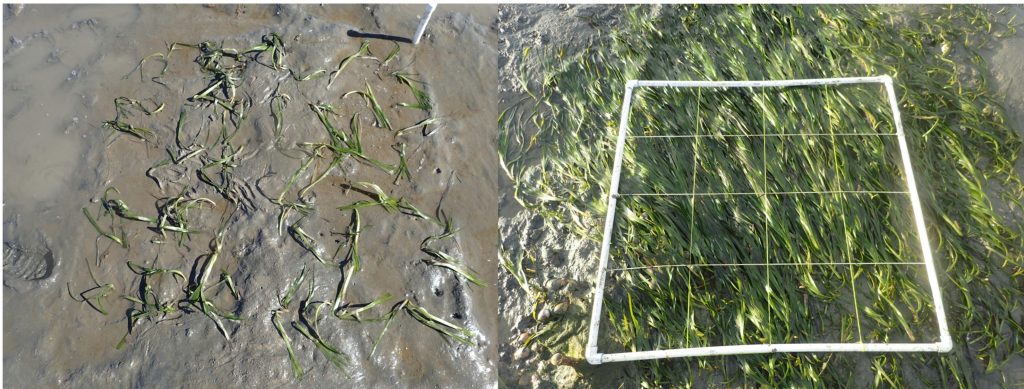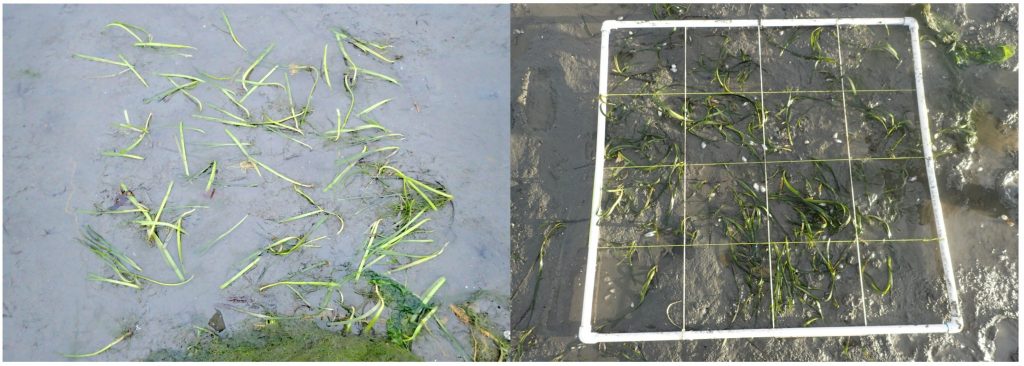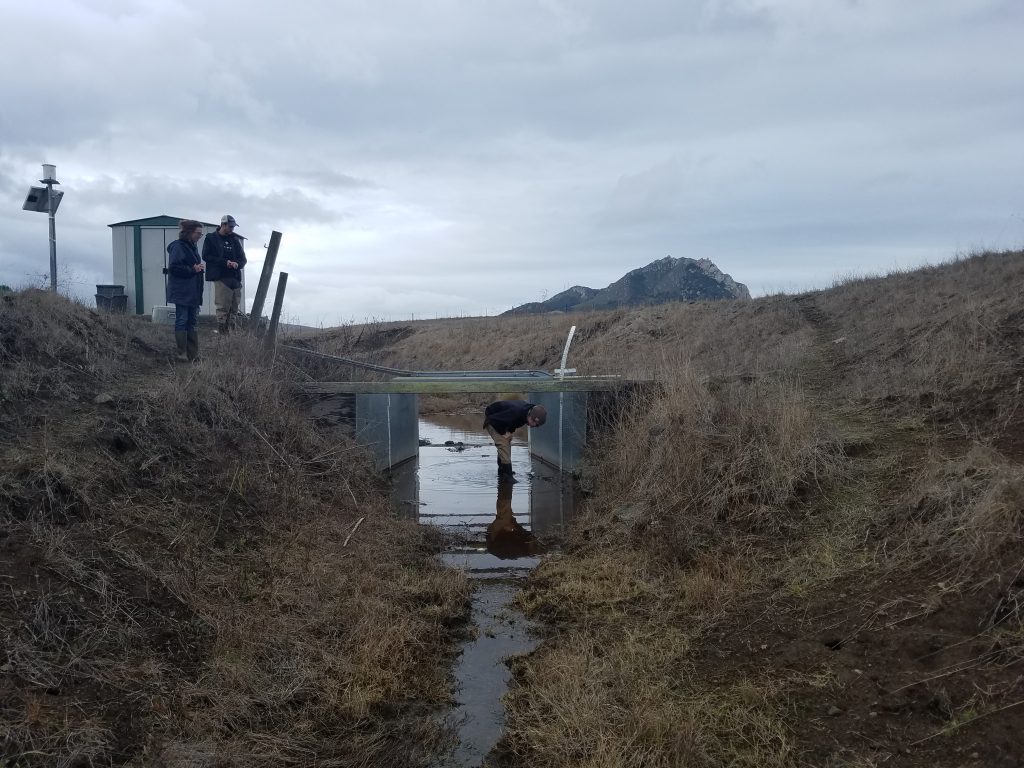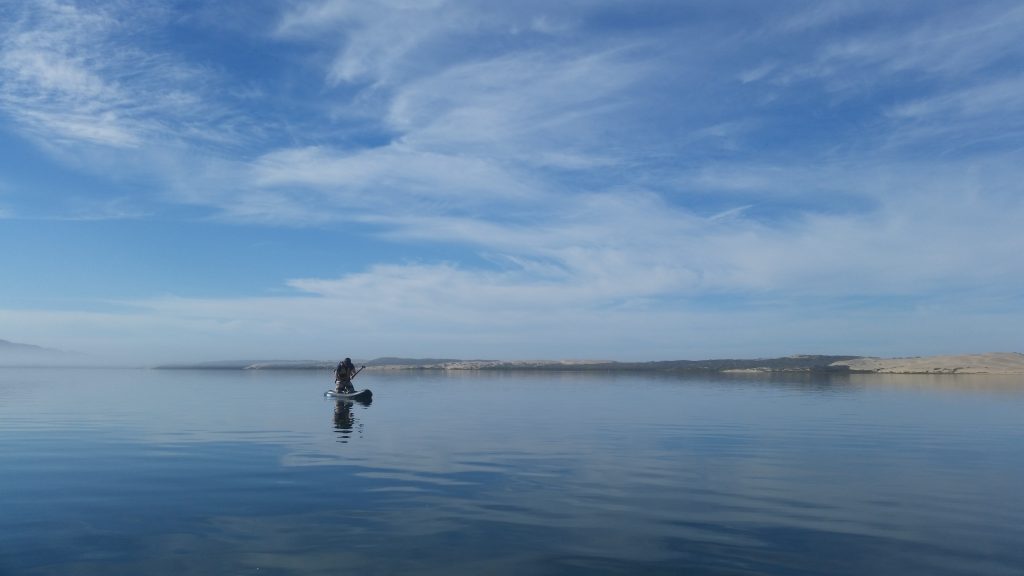Fulfilling our mission to protect and restore the Morro Bay estuary for people and animals requires a lot of hard work in the field. At the Estuary Program, that often means spending time doing research and monitoring work out on the water. Read on to see what our staff and volunteers have been up to during the first month of 2018!
Eelgrass Monitoring
We started the new year by monitoring the eelgrass we transplanted in March and July of 2017. With the help of Cal Poly, including graduate student Erin Aiello, we have been monitoring these plots regularly and using the data gathered to help inform future restoration efforts.
We kept these efforts to a small scale in order to test planting methods and to see if the season affected eelgrass survival. So far, we have learned that the survival was higher when we planted the eelgrass in the spring (March) compared to the summer (July).

While the summer plots don’t look as good as the ones from the spring, they are still holding on. Because of this difference in overall health and survival, we will be avoiding future summer transplanting efforts and, instead, focusing on planting in the spring.

Seeding
We planted eelgrass seeds in little burlap packets back in October and November. Most of the research we have read on eelgrass seeds found that they starting germinating in the February/March timeframe. We went out in January to check on the seeds, assuming we would not find anything. We did not find any seedlings at our sites in the forebay or at State Park Marina, but we were shocked to find 15 seedlings at our plot off Mitchell Drive!
These seedlings are so tiny that they’re hard to photograph, but here is a little one popping out of the center of a seed bag.

We went back two weeks later on the next negative tide cycle and found five more, for a total of 20 seedlings at Mitchell Drive. We will keep checking on all of the seed bags and hopefully, this will be a successful restoration method.
Ground Truthing
Back in December, aerial images were taken of the bay to help map eelgrass. We are now working on ground truthing, which means identifying and verifying locations of vegetation in the bay to help process those images. This has been a great opportunity to visit parts of the bay we do not usually see. While the tide and weather conditions are not always in our favor, we often get lucky with beautiful views of the bay.
Sediment
As you might recall, January 2017 was a little wet. Between January 1st and January 31st, the Morro Bay watershed received 10.77 inches of rain and Chorro Creek topped the Canet Road bridge a total of 3 times. This January was a much drier, with only 3.18 inches of rain.
This rain was enough to get Walter’s Creek, previously dry, flowing for at least a little bit.

Unfortunately, that January 2018 rain was followed by unseasonably warm and dry weather, which has pushed our county back into severe drought.
While we are hoping for more rain, this dry January did allow us to finish processing all of our sediment samples collected during stormy 2017. Staff is now working on processing the data to look at how much suspended sediment passed through the creeks at different storm events.
